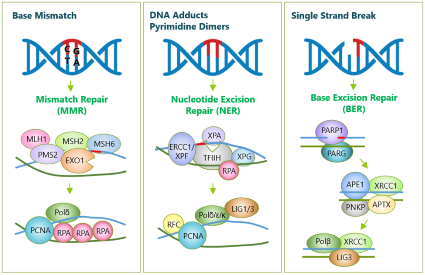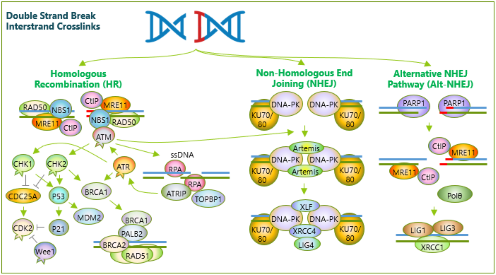DNA Damage Repair
DNA damage repair (DDR) processes are critical for maintaining healthy cells, while potentially serving as promising targets for inducing synthetic lethality in cancer cells.
DNA damage, resulting in base mismatches, bulky adducts, cross-links, single strand breaks, or double strand breaks, can occur from a variety of exogenous and endogenous mechanisms.
In response to such DNA damage, mammalian cells employ an array of mechanisms to repair the damaged DNA. Certain types of DNA damage will trigger specific response pathways that include a defined set of proteins responsible for initiating and carrying out repair functions. In addition, repair pathways can also trigger cell cycle regulation, stress responses, and apoptosis.





Many proteins involved in DDR pathways are potential therapeutic targets in oncology. Specifically, some inhibitors of DDR increase the efficacy of DNA damaging cancer therapy (chemo or radiotherapy), whereas other DDR inhibitors display synthetic lethality when combined with a genetic alteration or chemical inhibition of complementary DDR pathways.
Custom Product Development
Can’t find the product you are looking for? Our experts could build it for you. Learn more.
Biochemical Assay Kits and Proteins to Enable Discovery
Inquiries
│Products
│Related Services
- DNA Replication & Repair Screening & Profiling
- Custom Biochemical Assay Development
- PARP/PARPTrap™ Screening & Profiling

